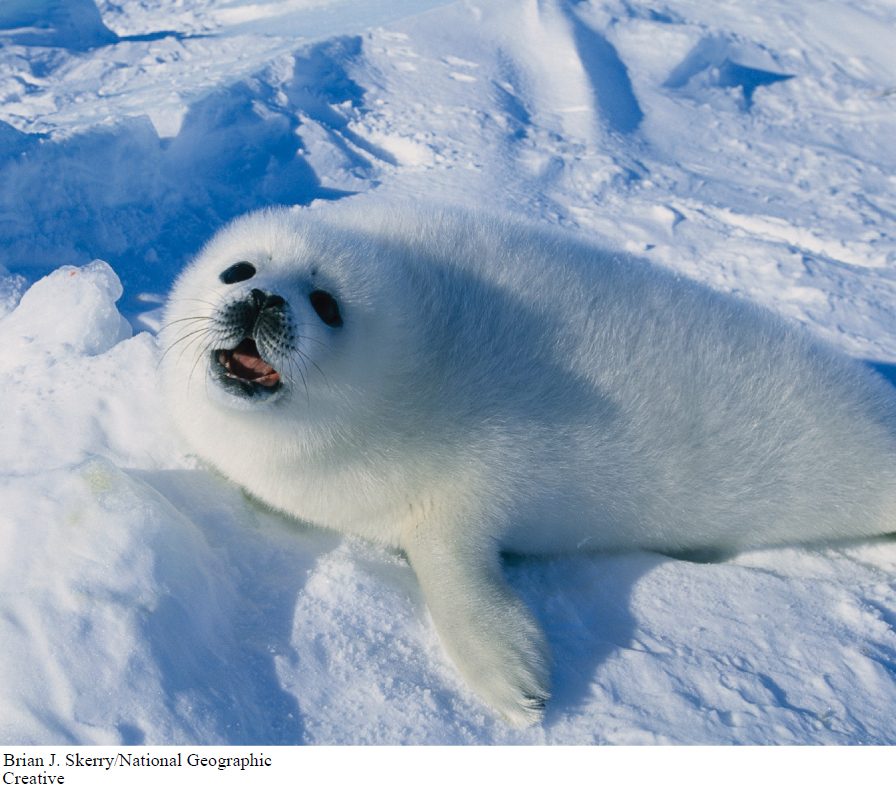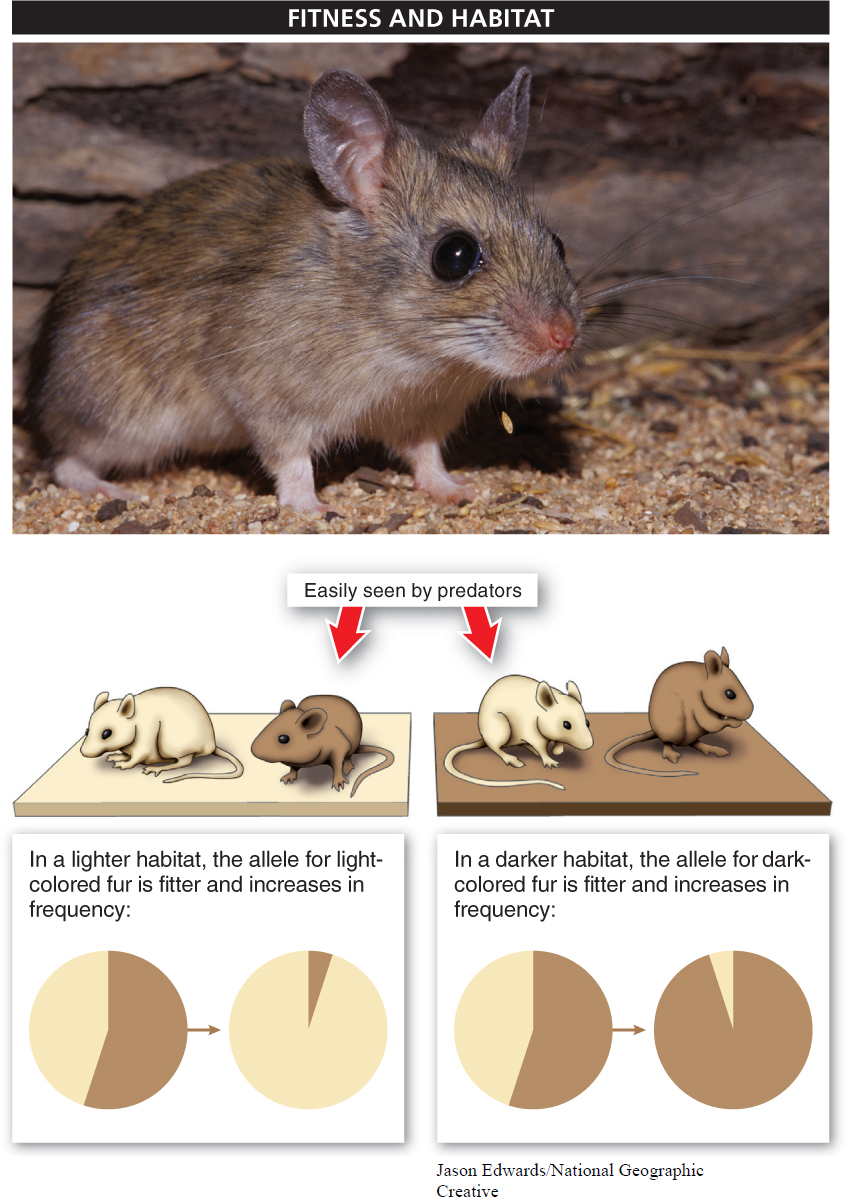
“Survival of the fittest.” This is perhaps one of the most famous but most misunderstood phrases. Taken literally, it seems to be circular: those organisms that survive must be the fittest. But this is true only if being fit is defined as the ability to survive. As we’ll see, in evolution, the word fitness is not defined by an organism’s ability to survive or its physical strength or its health. Rather, fitness has everything to do with an organism’s reproductive success.
Here’s an interesting side note: the phrase “survival of the fittest” was coined not by Darwin but by Herbert Spencer, an influential sociologist and philosopher. Moreover, the phrase did not appear in The Origin of Species when Darwin first published it. It wasn’t until the fifth edition, 10 years later, that he used the phrase in describing natural selection.
Before we see how fitness affects natural selection and a population’s adaptation to its environment, let’s define fitness. Fitness is a measure of the relative amount of reproduction of an individual with a particular phenotype compared with the reproductive output of individuals of the same species with alternative phenotypes.
Suppose there are two fruit flies. One fly carries the genes for a version of a trait that allows it to survive a long time without food. The other has the genes for a different version of the trait that allows it to survive only a short while without food. Which fly has the greater fitness? If the environment is one in which there are long periods of time without food, such as in the experiment described at the beginning of the chapter, the fly that can live a long time without food is likely to produce more offspring than the other fly, and so over the course of its life it has greater fitness. The alleles carried by an individual with high fitness will increase their proportion in a population over time, and the population will evolve.
There are three important elements to an organism’s fitness.
- 1. An individual’s fitness is measured relative to other genotypes or phenotypes in the population. Those traits that confer the highest fitness will generally increase in frequency in a population, and their increase will always come at the expense of alternative traits that confer lower fitness.
- 2. Fitness depends on the specific environment in which the organism lives. The fitness value of having one trait versus another depends on the environment. A sand-
colored mouse living in a beach habitat will be more fit than a chocolate- colored mouse. But that same sand- colored mouse will practically call out to potential predators if it lives in the darker brush away from the beach. An organism’s fitness, although genetically based, is not fixed in stone and unchanging— it can change over time and across habitats (FIGURE 8-22).  Figure 8-22An organism’s fitness depends on the environment in which it lives.
Figure 8-22An organism’s fitness depends on the environment in which it lives. - 3. Fitness depends on an organism’s reproductive success compared with other organisms in the population. If you carry an allele that gives you the trait of surviving for 200 years, but that also causes you to be sterile, your fitness is zero; that allele will never be passed down to future generations, and its frequency in the population will soon be zero. On the other hand, if you inherit an allele that gives you a trait that causes you to die at half the age of everyone else, but also causes you to have twice as many offspring as the average individual, your fitness is increased. It is reproductive success that is all-
important in determining whether particular traits increase in frequency in a population.
339
“Survival of the fittest” is a misnomer. Why?
“Survival of the fittest” is a misleading phrase because it is the individuals with the greatest reproductive output that are the most fit in any population. It becomes a more meaningful phrase if we consider it as a description of the fact that those alleles that increase an individual’s fitness will “survive” in a population more than those that decrease an individual’s fitness.
340
TAKE-HOME MESSAGE 8.11
Fitness is a measure of the relative amount of reproduction by an individual with a particular phenotype, compared with the reproductive output of individuals with alternative phenotypes. An individual’s fitness can vary, depending on the environment in which it lives.
Who has greater fitness: a world-
Fitness is a measure of reproductive output relative to others in the population, not physical stature. Therefore, the accountant with four children would have greater fitness than the bodybuilder in this example.